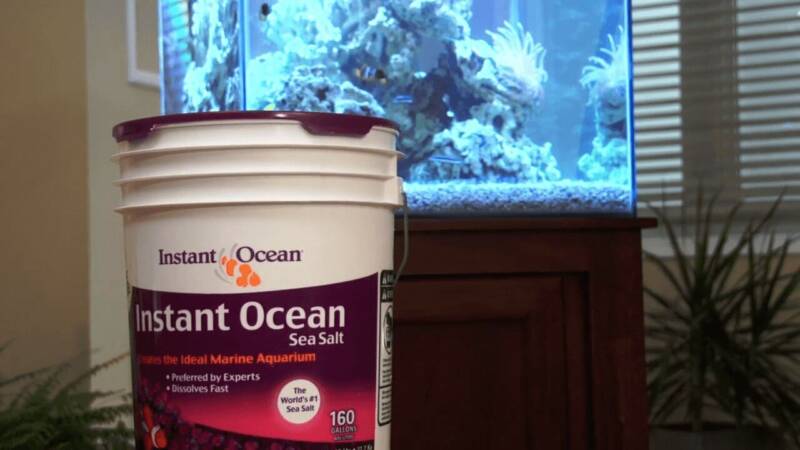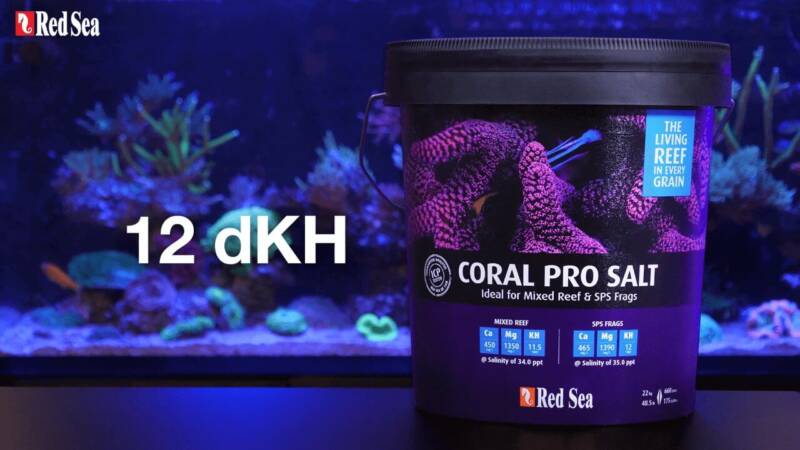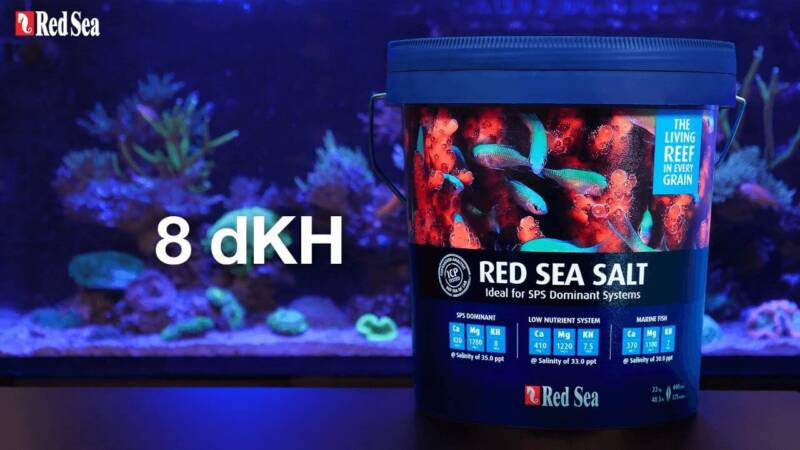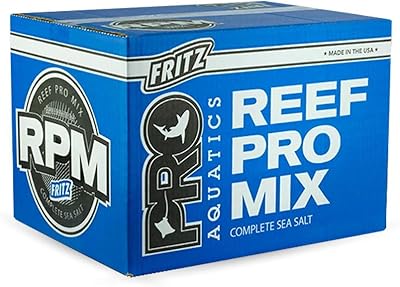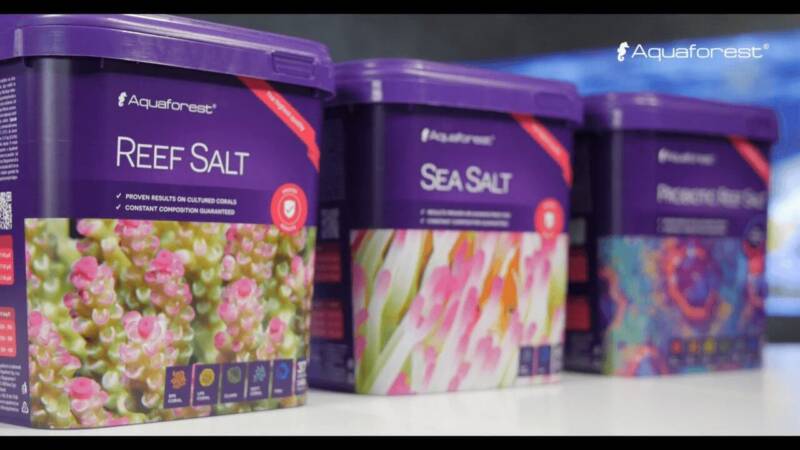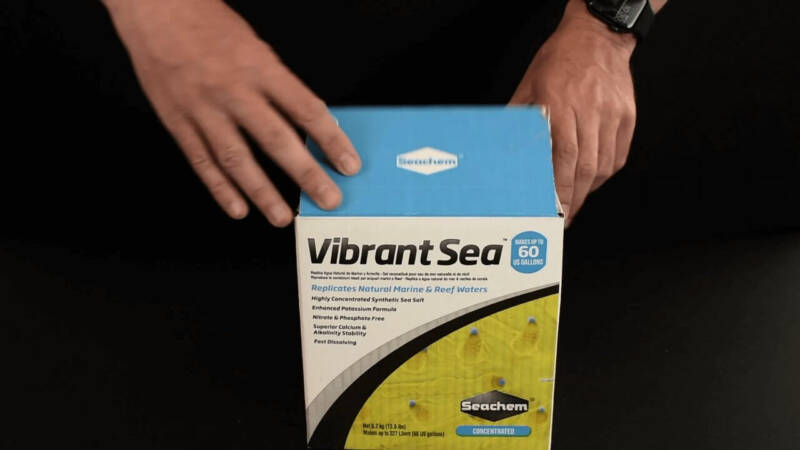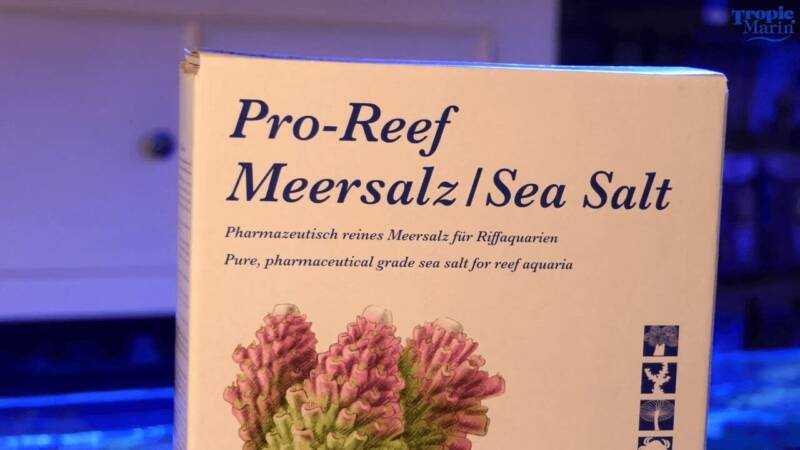Selecting a marine salt for your saltwater aquarium can be a confusing process.
There are many brands to choose from. There are also specialty marine salts marketed for specific types of marine life, like SPS and LPS corals.
We’ll take a look at the most popular marine salt mixes and provide a breakdown of their features. You’ll be able to make an informed decision about which salt is best for your marine aquarium.
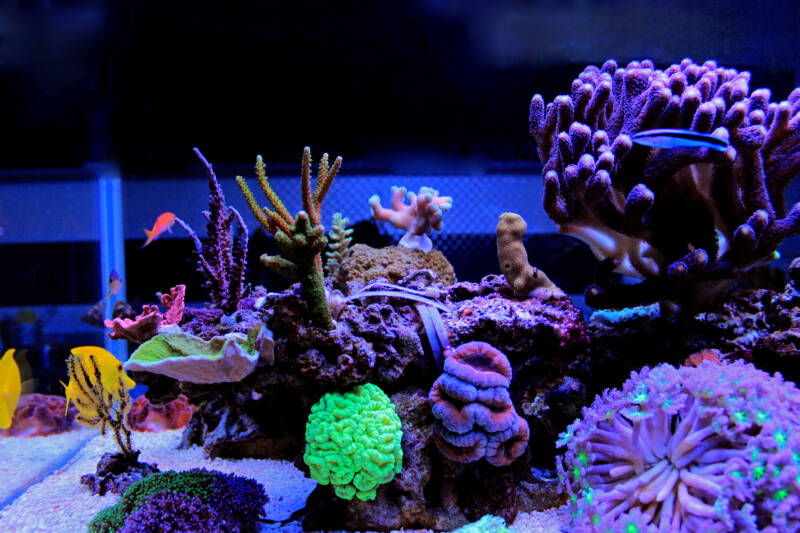
[toc]
What is marine salt?
When you mix your own saltwater, you’re creating synthetic seawater. That’s because the salt mix is a blend of individual salts, pH buffers, and trace elements.
Salts include potassium, sodium, calcium, chloride, and bicarbonates, to name a few. The synthetic chemicals are blended in a factory and packaged in bags and buckets.
Once properly dissolved in freshwater, the water is transformed into a balanced blend of the same salts found in the ocean.
Is real seawater used to make marine salt?
Some companies use sodium chloride made from evaporated seawater. But you can’t dry out seawater, add water and have it dissolve properly.
So those marine mixes are made primarily from synthetic chemicals. It’s the only way to guarantee a consistent formula batch after batch.
How to dissolve marine salt?
- Most saltwater aquarists use an empty five-gallon bucket to mix up a seawater batch. The mixing container should be new and never used for anything but mixing saltwater.
- Using ice-cold water to dissolve salts will slow the dissolving time. Plus, the cold water will shock your marine life. I like to use water around 65-75°F (18-24°С). Avoid using hot water. Really hot water causes calcium to form insoluble calcium carbonate.
- The salt will dissolve faster when the water is circulating in the container. The blend of salts and trace elements has different dissolving rates. Moving water causes them to dissolve more quickly. I use a small submersible powerhead in my salt bucket.
How do I know my salinity is correct?
If the amount of salt added to the mixing container is incorrect, the salt concentration (salinity) will be too low or too high.
Start by adding the recommended amount listed on the package. Once the salt is dissolved, measure the salinity with a refractometer.
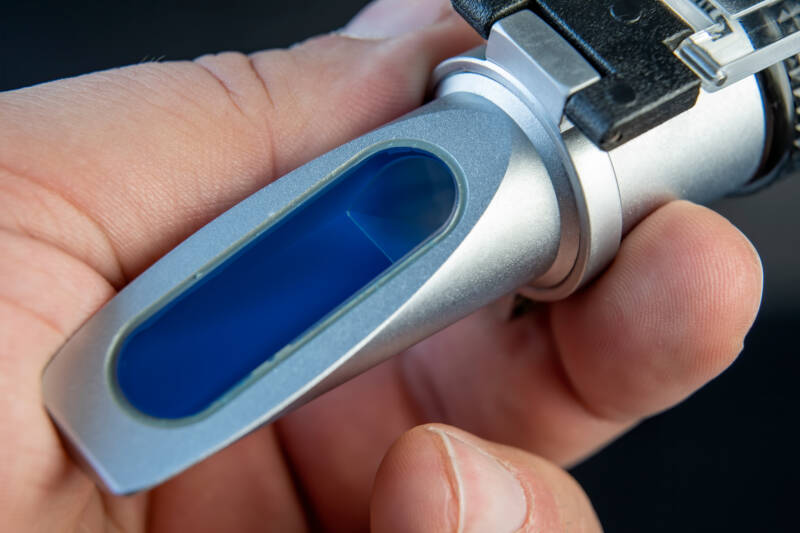
The goal is to make saltwater with a salinity of 35-36 ppt.
If the salt is too concentrated, add some freshwater and test again. If the salt is too dilute, add a little salt and re-test.
Should I use municipal water, well water, or reverse osmosis water?
Municipal and well water is generally considered risky for use in marine aquariums.
Nearly all saltwater aquarists use reverse osmosis for the aquariums. There are several reasons why:
- Reef invertebrates are very sensitive to heavy metals like copper. Most water supplies contain copper from pipes.
- Seawater mixes are formulated to work best in pure water. Reverse osmosis water contains NO unwanted minerals, salts, or metals so the final salt solution matches the ocean.
- Reverse osmosis filters remove chlorine, chloramine, and organic pollutants that can be found in well and municipal water.
- Municipal and well water often contains algae-promoting phosphate and nitrate. Reverse osmosis removes these contaminants.
What’s the difference between reef salt and regular salt mixes?
Reef salt is formulated with extra calcium. This helps when keeping reef-building LPS and SPS corals, clams, and coralline algae. Some brands increase other parameters like trace elements or alkalinity.
Regular marine salt is formulated to match the ocean’s salt content without extra calcium or trace elements. This is perfect for keeping fish-only aquariums.
But even some reef enthusiasts prefer regular marine mixes over the boosted reef types. That’s because they like to add their own calcium, magnesium, and alkalinity supplements based on their own testing and tank’s needs.
Can I use marine salt in a freshwater aquarium?
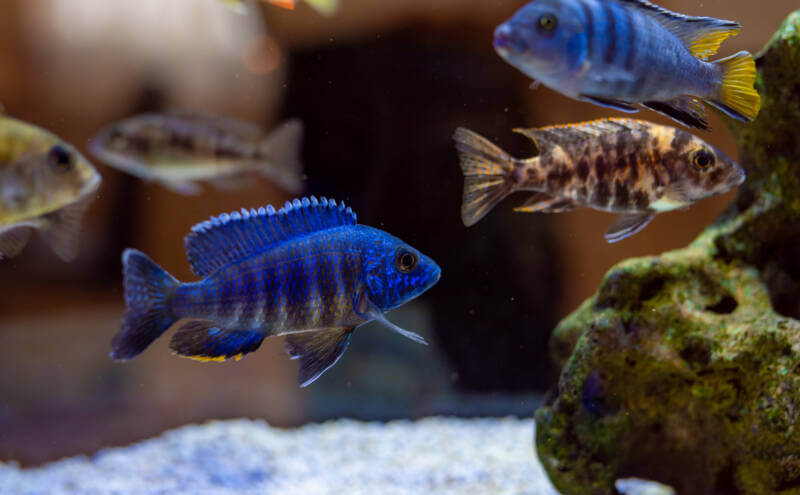
Marine salt mixes contain pH buffers that will increase the pH to around 8.4.
Using marine salt in a freshwater African cichlid aquarium or brackish tank is OK.
But for most freshwater tanks, you should use inexpensive “aquarium salt.” It may say “made from evaporated seawater,” but it won’t increase the pH or make the water harder by adding calcium and magnesium.
Which marine salt is the best?
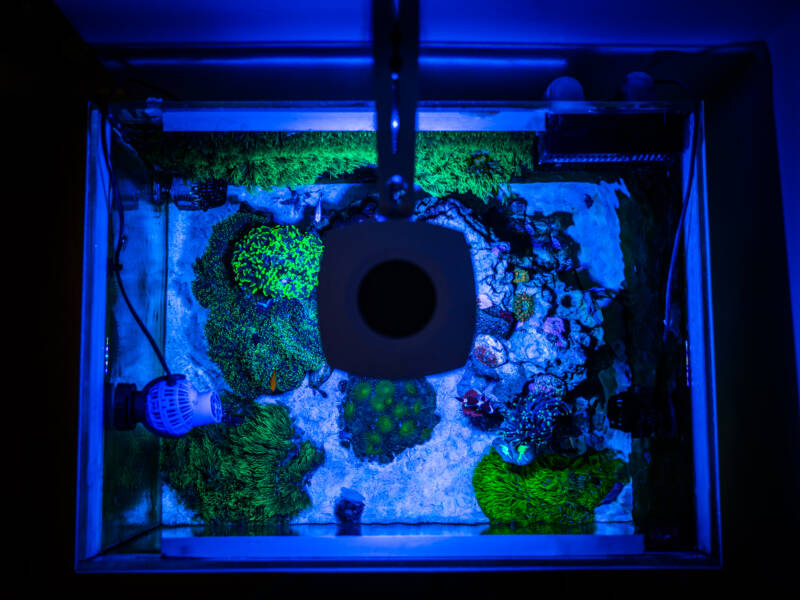
You’ll never find agreement among saltwater aquarists on which salt is best. There are many fine brands to choose from.
Here is a list of the most popular salt mixes to choose from:
Instant Ocean Reef Salt was one of the first salt manufacturers to come out with a reef formula.
It contains extra calcium to encourage the growth of large and small polyp stony corals (LPS & SPS) as well as coralline algae.
It’s also fortified with vitamins, which fish and corals absorb. IO Reef Crystals contain a small amount of heavy metal detoxifier just in case your water contains copper.
- Time-proven formula
- Fast-dissolving
- Available in different sizes from 10-gallons up to 200-gallons
This salt mix was the first commercial seawater mix in the US and Canada. It’s been used for decades by public aquariums, laboratories, breeders, and aquarium shops worldwide.
Instant Ocean Sea Salt is nitrate and phosphate-free and can be used in any marine or reef aquarium.
- Time-tested formula
- Uses pure salts without contaminants
- Excellent reputation
- Available in several sizes from 10-gallons up to 200-gallons
Red Sea is a well-known manufacturer of reef products.
They claim they’ve adjusted the ratio between calcium, magnesium, and carbonates for optimal coral growth. This causes accelerated growth of all soft, LPS, and SPS corals.
Red Sea recommends this salt for growing out SPS coral frags.
- Trusted company
- Available in 50-gallon mix buckets
- Formulated for keeping and fragging reef corals
This salt is a basic salt blend with no extra elements. It’s perfect for fish-only and FOWLR tanks.
If you’ve got a reef and like to add your own supplements, this salt is perfect.
It’s nitrate and phosphate-free. The absence of excessive levels of heavy metals in Red Sea Salt eliminates the need for chemical binders that adversely affect the function of protein skimmers.
- Fast dissolving
- Basic salt for all marine tanks
- Used by seahorse aquarists
- Available in 55 and 175-gallon containers
Fritz Aquatics is one of the founding companies in the aquarium hobby. Fritz is also active in the aquaculture industry.
Their RPM salt stands for Reef Pro Mix. This salt is formulated for use in all types of saltwater aquariums.
The salt blending equipment is used for the production of aquatic products, preventing contamination issues.
RPM contains extra calcium, magnesium, and potassium for reef-keeping. The pH quickly stabilizes and provides correct alkalinity levels.
- Dissolves quickly with clear water
- Can be used in any type of aquarium
- Made with ammonia-free salts
- Available in sizes up to 200 gallons
Aquaforest reef salt was created to support the company’s coral and fish farming operations in Poland. The company developed its own marine salt for their farms.
In 2011 the company began selling its formulations to the aquarium hobby under the Aquaforest brand.
The micronutrients and macronutrients contained in the formula fulfill the demand of corals for proper growth and pigmentation.
Aquaforest reef salt is suitable for any type of marine tank, including fish, FOWLR, and reef.
Aquaforest Probiotic salt contains the same high-quality salts plus beneficial bacteria that reduce nitrates and phosphates and prevent the growth of pathogenic bacteria in the marine aquarium.
It’s said to be for aquariums with fish and less delicate corals and invertebrates.
- Available in a variety of mix sizes
- Quick dissolving formula
- Leaves no undissolved residue
- Three formulas for ANY saltwater tank
NeoMarine is a general synthetic marine salt for all types of captive marine life. Its formula matches natural seawater ratios of all major, minor, and trace elements.
NeoMarine is manufactured in the US. The manufacturer guarantees there is no detectable ammonia, nitrate, phosphate, or organic substances at standard specific gravity.
The salt is poured directly into the plastic buckets without a plastic bag – this offers less protection from moisture.
- Available from 16 to 300-gallon mix containers
- Can be used in any type of marine fish and reef aquarium
- Available in small and large containers
The product uses anhydrous salt (no water molecules), which allows for uniformity from batch to batch as well as the ability to produce more saltwater with less salt.
Seachem promises balanced magnesium, calcium, and strontium levels with proper alkalinity and pH levels. If you’ve got Rift Lake cichlids Seachem has a specially formulated salt just for African cichlids.
The freshwater salt formula provides magnesium, potassium, calcium, and sodium along with trace elements such as iron, aluminum, and iodide.
The Reef Salt is available in a 60-gallon mix.
- Contains all essential major, minor, and trace components
- Slightly more concentrated than other salts
If you’ve got Rift Lake cichlids, Seachem has a specially formulated salt just for African cichlids.
The freshwater salt formula provides magnesium, potassium, calcium, and sodium along with trace elements such as iron, aluminum, and iodide.
- Nitrate-free
- Formulated for freshwater African cichlids
- Easy to duplicate Rift Lake salt levels
For over 15 years Kent Marine has been a leader in the aquarium trade.
The salt contains elevated calcium, magnesium, and strontium.
- Quick-dissolving
- No residue in the mixing bucket
- Nitrate and phosphate-free
- Available in 25, 50 and 200-gallon mixes
The lower buffering capacity and correct pH level make this high-tech salt suitable with calcium reactors.
Available in sizes from 32 to 200 gallons.
- Optimized calcium-and magnesium levels
- Manufactured from pure, pharmaceutical-grade salts
- Contains all major-and minor elements in the exact proportions found in tropical seawater
Tropic Marin BIO-ACTIF Sea Salt is similar to Pro Reef but contains naturally occurring marine biopolymers, which enhance the microbiological conditions in the aquarium.
- Enhances coral growth and coloration
- Helps balance the aquariums microbe population
- Contains all major-and minor elements in the exact proportions found in tropical seawater
- Available in sizes from 32 to 200 gallons
H2Ocean is a blend of sun-evaporated sea salt and synthetic salts. This salt has enhanced calcium and magnesium to stimulate corals and coralline algae growth.
- Mixes clear with no residue
- No phosphate or nitrates
The salt is fast dissolving and provides the proper pH level once dissolved.
The manufacturer makes no statements about extra calcium or magnesium.
Reef aquarists should monitor the calcium and magnesium levels and add supplements if necessary.
- 50 to 200-gallon mix sizes
- Dissolves quickly
- Phosphate and nitrate-free
Recommendations
Five-gallon bucket
Most saltwater aquarists use an empty five-gallon bucket to mix up a batch of seawater.
The mixing container should be new and never used for anything but mixing saltwater.
Temperature
Using ice-cold water to dissolve salts will slow the dissolving time a little bit. Plus, the cold water will shock your marine life.
I like to use water around 65-75°F (18-24°С). Avoid using hot water. Really hot water causes calcium to form insoluble calcium carbonate.
Moving
The salt will dissolve faster when the water is circulating in the container. The blend of salts and trace elements has different dissolving rates.
Moving water causes them to dissolve more quickly. I use a small submersible powerhead in my salt bucket.
Selecting marine salt is very subjective. Most aquarists start with a brand and stick with it for 6 to 9 months to see how their marine life looks and responds to the salt.
After gaining experience with one brand, it’s common to try another brand to see if makes an improvement. The switch is gradual through partial water changes.
The key is to know your tank’s inhabitants and gain the ability to gauge their health and happiness.
Also, remember to take it slow. Don’t make any drastic changes while evaluating a new salt.
If you are keeping saltwater fish or FOWLR tank, start with a basic salt with a good reputation. Instant Ocean Sea Salt is a proven winner along with Red Sea Salt.
For reef aquariums with SPS and LPS corals, you’ll have to choose if you want a salt fortified with extra calcium or a basic salt where you can add your own supplements.
I find Fritz RPM to be a good basic salt for reef-keeping. On the higher end of reef salts, you’ll find Tropic Marin Pro Reef and Aquaforest salt mix.
If you have any comments or questions, please leave them below.


